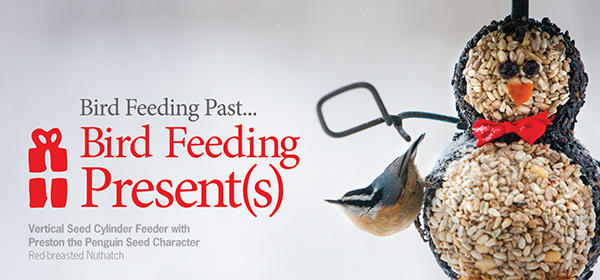
Make Birds a Part of Your Holiday Traditions
The best traditions feel personal, and for nature lovers like you, birds are a meaningful part of the holiday magic. From wintry backyard sightings to festive feeders in the yard, birds make the season feel even more special.
One heartwarming tradition comes from Scandinavia: offering a holiday feast to the birds. Traditionally, it’s a porch display of seeds. According to folklore, attracting birds invites good fortune into your home for the year ahead. You can put your own spin on it by offering a WBU Seed Character for a festive (and functional) porch decoration birds will love.
Take your tradition a little further and join the annual Audubon Christmas Bird Count—a global community event going strong since 1900. It’s the perfect excuse to explore nature with family, contribute to important bird conservation science and soak up a little fresh air during the busy holiday season.
Whether you're continuing a cherished routine or starting a new one, we can help you bring nature into your holidays. Stop by for expert advice, along with the best seed, feeders, and nature-inspired gifts to help you share the joy with others.

